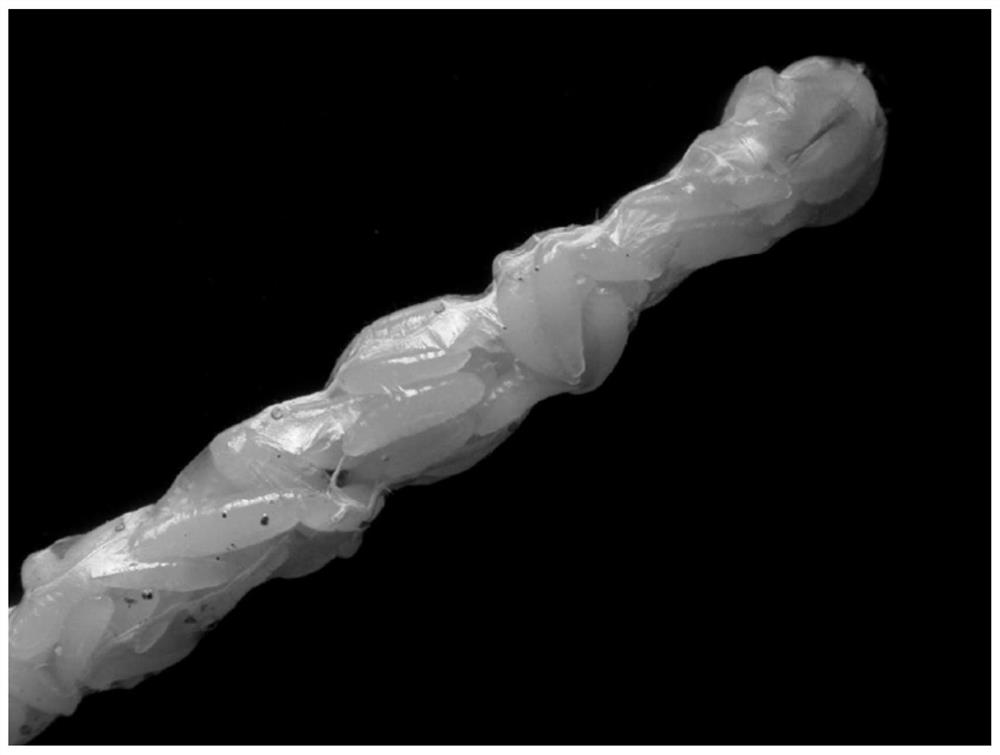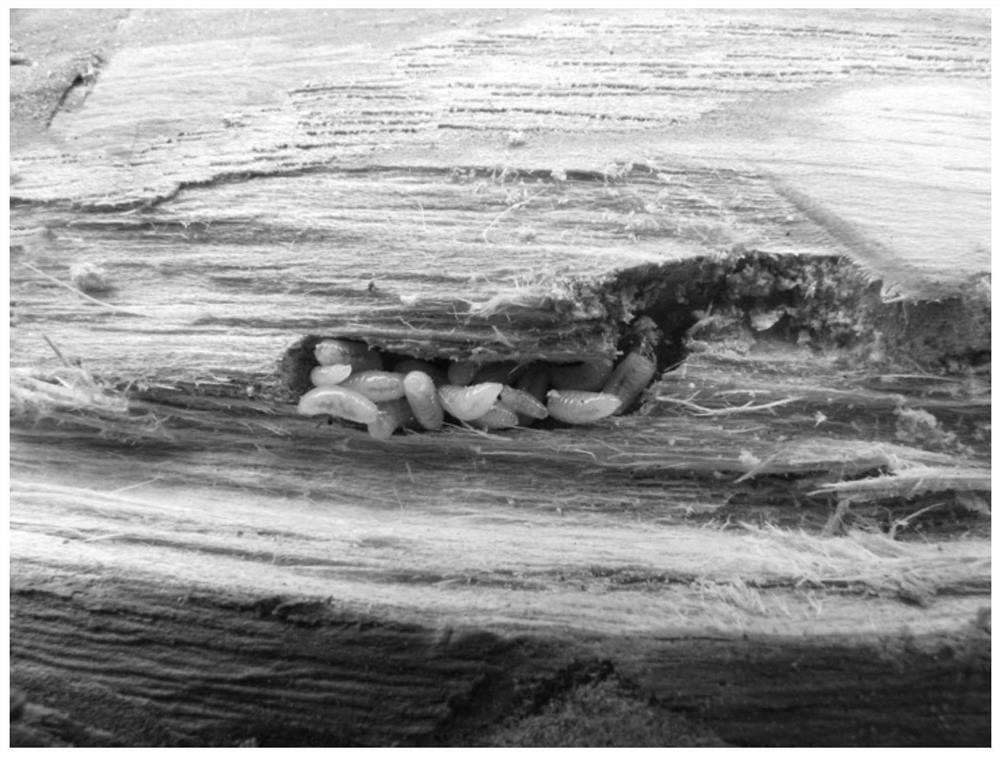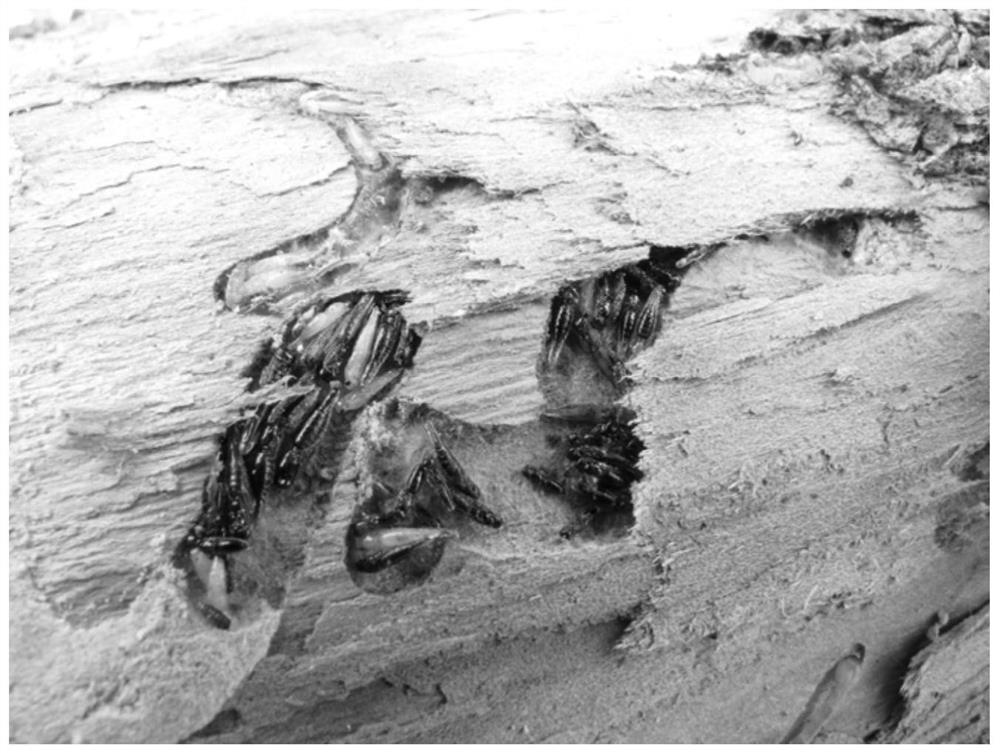Breeding method of tetrastichus planipennisi and application of tetrastichus planipennisi to prevention and treatment of agrilus planipennis
A technique for P. chinensis and P. chinensis female bees, which are applied in the directions of application, botanical equipment and methods, monitoring of invasive species, etc., and can solve the problem of unrealized large-scale breeding of natural enemies, limited sample collection, and experimental research. and pest control efficiency
- Summary
- Abstract
- Description
- Claims
- Application Information
AI Technical Summary
Problems solved by technology
Method used
Image
Examples
Embodiment 1
[0027] (1) Sample wood species and host insects: the sample trees and hosts were respectively selected as follows: ash-white wax larvae, oak tree-queer larvae, walnut tree-walnut larvae, willow-golden beetle larvae , peach tree-pink-necked longhorn beetle larvae, respectively marked as treatment 1-5 (other conditions remain unchanged);
[0028] (2) Parallel experimental setup. Clean the surface of the sample wood that has just been felled with water and dry it. A small piece of bark is peeled off at different parts of the sample wood that are relatively flat and smooth. 3mm grooves, put healthy larvae into the grooves and cover with bark, then wrap them tightly with Parafilm to obtain worm-like wood with 10 host insects on each piece of wood, repeat 5 times;
[0029] (3) Insert the morphological lower end of the worm-like wood vertically into the wet flower mud, cover the outside with an insect raising tank, apply a little honey on the ventilation net on the side wall of the t...
Embodiment 2
[0037] (1) Wash and dry the surface of the just felled ash-like wood with water, peel off a small piece of bark at different parts of the sample wood that are relatively flat and smooth, and use a knife to make a 1cm wide and 3mm deep piece of bark In the groove, put the healthy 3-4 instar larvae of ash narrow gelatin into the groove, cover the bark, and then wrap it tightly with Parafilm to obtain a worm-like wood, with 10 host insects on each piece of sample wood, and repeat 5 times;
[0038] (2) Insert the morphological lower end of the worm-like wood vertically into the wet flower mud, cover the outside with an insect raising tank, apply a little honey on the ventilation net on the side wall of the tank, and set it aside. Afterwards, slightly open one part of the insect tank, and carefully put the healthy and mated female bee of the ash jellyfish into the tank. The ratio of the number of bees is 1:1, that is, 50 bees are received for each treatment;
[0039] (3) Parallel ...
Embodiment 3
[0046] (1) Wash and dry the surface of the just felled ash-like wood with water, peel off a small piece of bark at different parts of the sample wood that are relatively flat and smooth, and use a knife to make a 1cm wide and 3mm deep piece of bark In the groove, put the healthy 3-4 instar larvae of ash narrow gelatin into the groove, cover the bark, and then wrap it tightly with Parafilm to obtain a worm-like wood, with 10 host insects on each piece of sample wood, and repeat 5 times;
[0047] (2) Insert the morphological lower end of the worm-like wood vertically into the wet flower mud, cover the outside with an insect raising tank, apply a little honey on the ventilation net on the side wall of the tank, and set it aside. Afterwards, slightly open one part of the insect tank, and carefully put the healthy and mated female bee of the ash jellyfish into the tank. The ratio of the number of bees is 1:1, that is, 50 bees are received for each treatment;
[0048] (3) According...
PUM
 Login to View More
Login to View More Abstract
Description
Claims
Application Information
 Login to View More
Login to View More - R&D Engineer
- R&D Manager
- IP Professional
- Industry Leading Data Capabilities
- Powerful AI technology
- Patent DNA Extraction
Browse by: Latest US Patents, China's latest patents, Technical Efficacy Thesaurus, Application Domain, Technology Topic, Popular Technical Reports.
© 2024 PatSnap. All rights reserved.Legal|Privacy policy|Modern Slavery Act Transparency Statement|Sitemap|About US| Contact US: help@patsnap.com










